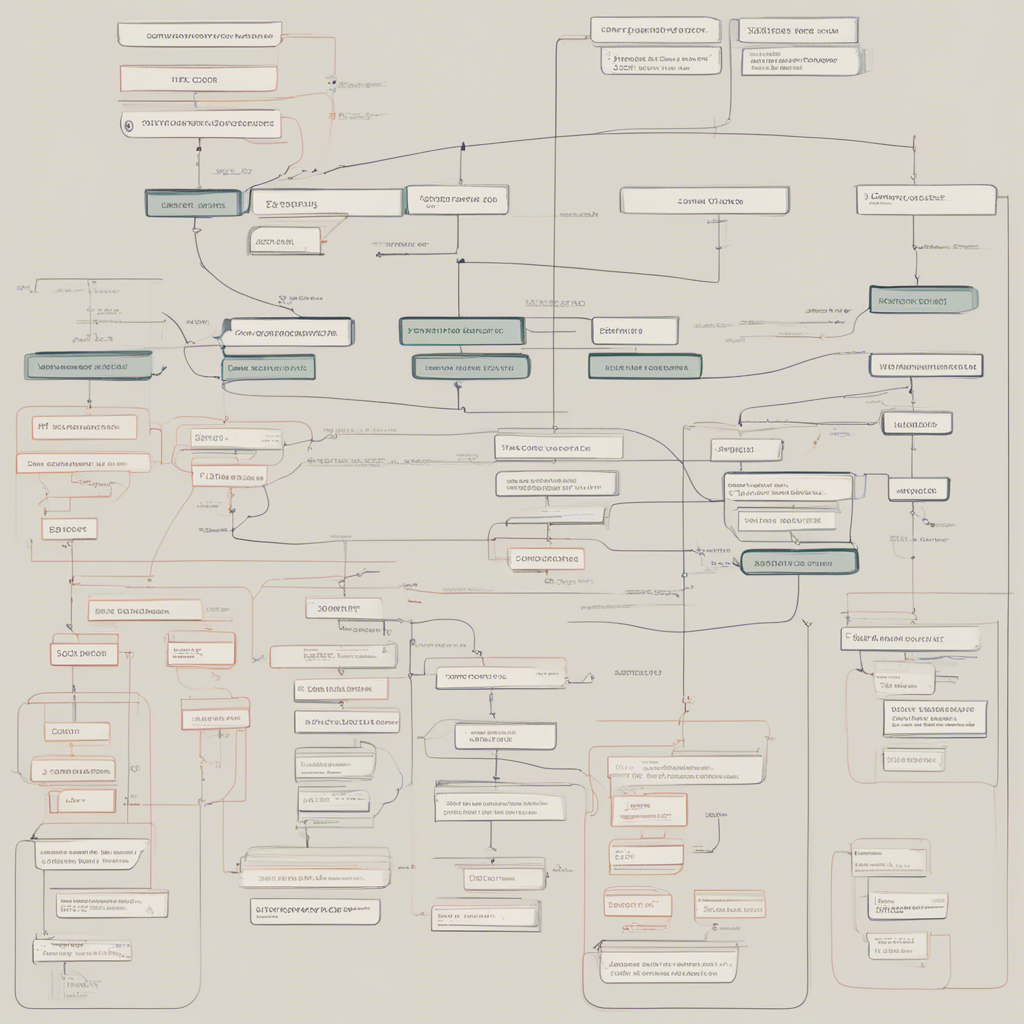
Choosing the Right Tech Stack for Your Startup
Starting a new tech-focused startup is an exciting endeavor that can lead to great success. However, one of the biggest challenges faced by entrepreneurs is choosing the right tech stack for their new venture. The tech stack refers to the combination of programming languages, frameworks, libraries, and tools used to develop a software application.
Selecting the right tech stack is crucial because it can greatly impact the scalability, performance, and maintainability of your startup’s product. In this blog post, we will discuss the key factors to consider when choosing a tech stack and provide recommendations based on different startup scenarios.
Understanding Your Startup’s Requirements
Before diving into the world of programming languages and frameworks, it’s important to have a clear understanding of your startup’s requirements. This involves answering questions such as:
- What is your product idea and its target audience?
- What are the core features and functionalities of your product?
- What are the scalability and performance requirements?
- What is your budget and time constraints?
- What are the skills and expertise of your development team, if you have one?
Once you have a clear understanding of these requirements, you can start evaluating different tech stacks that align with your startup’s needs.
Choosing the Right Programming Language
Choosing the right programming language is the first step when selecting a tech stack. Here are some popular programming languages used in startups today:
-
Python: Python is known for its simplicity and readability, making it a great choice for startups with a focus on rapid development. It has a vast array of libraries and frameworks that support web development, data analysis, and machine learning.
-
JavaScript: JavaScript is the de facto language of the web and is widely used for frontend and backend development. It offers a large ecosystem of frameworks and libraries such as React and Node.js, which enable building real-time applications.
-
Ruby: Ruby is a dynamic, object-oriented programming language known for its simplicity and elegance. It is the language behind Ruby on Rails, a popular web application framework used by startups for its productivity and ease of use.
-
Golang: Golang, also known as Go, is a statically typed, compiled language designed for concurrency and scalability. It is known for its performance and simplicity, making it a great choice for building web services and backend systems.
-
Java: Java is a widely adopted programming language known for its platform independence and scalability. It is often used in enterprise-level startups due to its robustness and extensive ecosystem of frameworks and libraries.
-
C#: C# is a versatile programming language developed by Microsoft and widely used for building Windows applications and web services. It has a strong integration with the .NET framework, which provides a powerful set of tools and libraries.
-
PHP: PHP is a popular server-side scripting language used for web development. It is well-suited for startups that prioritize simplicity and time-to-market, as it has a low learning curve and a large community.
When choosing a programming language, it’s essential to consider factors such as community support, availability of skilled developers, and the specific requirements of your product.
Selecting the Right Frameworks and Libraries
Frameworks and libraries are essential components of a tech stack that streamline the development process and provide ready-made solutions for common challenges. Here are some popular frameworks and libraries used in startups:
-
Django: Django is a high-level Python web framework known for its simplicity and productivity. It follows the Model-View-Controller (MVC) architectural pattern and provides a robust set of tools for building web applications.
-
Ruby on Rails: As mentioned earlier, Ruby on Rails is a popular web application framework that emphasizes convention over configuration. It follows the MVC pattern and comes with many built-in features and libraries, promoting rapid development.
-
React: React is a JavaScript library for building user interfaces and is widely used for developing single-page applications. It follows a component-based approach, making it easy to build reusable UI elements.
-
Angular: Angular is a TypeScript-based JavaScript framework developed by Google. It provides a comprehensive set of tools for building large-scale, enterprise applications and offers features like data binding, dependency injection, and component-based architecture.
-
Node.js: Node.js is a runtime environment that allows developers to build server-side applications using JavaScript. It follows an event-driven, non-blocking I/O model, making it suitable for building scalable, real-time applications.
-
Laravel: Laravel is a PHP framework known for its elegant syntax and expressive syntax. It provides a powerful set of tools for building web applications and is highly extensible through a wide range of third-party libraries.
Choosing the right frameworks and libraries depends on factors such as the programming language you have chosen, the complexity of your product, and the scalability requirements.
Databases and Infrastructure
Choosing the right database and infrastructure is another critical aspect of building your tech stack. Here are some popular choices:
-
Relational Databases: Relational databases like MySQL, PostgreSQL, and Oracle are widely used in startups due to their robustness, data integrity, and support for complex queries. They are suitable for applications with structured data and high transactional requirements.
-
NoSQL Databases: NoSQL databases like MongoDB, CouchDB, and Cassandra are suitable for startups dealing with large volumes of unstructured or semi-structured data. They offer high scalability and flexible data modeling capabilities.
-
Cloud Infrastructure: Cloud platforms like AWS, Google Cloud, and Azure offer scalable and cost-effective infrastructure services that startups can leverage. These platforms provide services like virtual servers, storage, and databases, allowing startups to focus on their core business without worrying about managing infrastructure.
-
Containerization: Containerization technologies like Docker provide a lightweight and portable way to package applications and their dependencies. They enable consistency across different environments and simplify deployment and scaling.
Understanding the scalability, performance, and data requirements of your startup will help you select the right database and infrastructure options.
Considerations for Mobile Applications
If your startup focuses on building mobile applications, you should consider the following additional factors:
-
Native Development: Native app development involves building separate applications for different platforms like iOS and Android using platform-specific languages like Swift and Kotlin. This approach provides the best performance and access to platform-specific features but requires separate development efforts.
-
Hybrid Development: Hybrid app development frameworks like React Native and Flutter enable building cross-platform applications using a single codebase. They allow for faster development and maintenance but may sacrifice some performance and platform-specific capabilities.
-
Progressive Web Apps (PWAs): PWAs are web applications that offer a native-like experience on mobile devices. They can be accessed through a web browser and can be installed on the home screen like a native app. PWAs provide a cost-effective way to reach a wider audience while maintaining a consistent user experience.
Considering the different options and their trade-offs will help you choose the right approach for your mobile application development.
Conclusion
Choosing the right tech stack for your startup is a crucial decision that can greatly impact the success of your venture. By understanding your startup’s requirements, evaluating programming languages, frameworks, databases, and infrastructure options, you can make an informed decision that aligns with your product vision and business goals.
Remember to consider scalability, performance, maintainability, and the availability of skilled developers when making your choices. Keep an eye on emerging technologies and trends to ensure your tech stack remains up-to-date and competitive in the ever-evolving tech industry.
By carefully considering all these factors and seeking advice from experienced developers or technology consultants, you can confidently select a tech stack that will empower your startup to thrive in today’s digital landscape.
Disclaimer: The information provided in this blog post is for educational purposes only. It is based on the author’s experience and research, and it is recommended to consult with professionals or conduct further research before making any decisions related to tech stack selection.
References:
- Python Software Foundation
- JavaScript: MDN Web Docs
- Ruby: The Ruby Programming Language
- Golang: The Go Programming Language
- Java: Oracle Technology Network
- C#: Microsoft Docs
- PHP: The PHP Group
- Django: The Web framework for perfectionists with deadlines
- Ruby on Rails: A web-application framework
- React: A JavaScript library for building user interfaces
- Angular: One framework. Mobile & desktop
- Node.js: JavaScript runtime
- Laravel: The PHP Framework for Web Artisans
- MySQL: The world’s most popular open source database
- PostgreSQL: The World’s Most Advanced Open Source Relational Database
- MongoDB: The most popular database for modern applications
- AWS: Cloud Computing Services
- Google Cloud: Cloud Computing Services
- Microsoft Azure: Cloud Computing Services
- Docker: Build, Share, and Run Any App, Anywhere
- Swift: The powerful programming language for macOS, iOS, watchOS, and tvOS
- Kotlin: The Kotlin Programming Language
- React Native: Learn Once, Write Anywhere
- Flutter: UI toolkit for building natively compiled applications
- Progressive Web Apps: A new way to deliver amazing user experiences on the web






